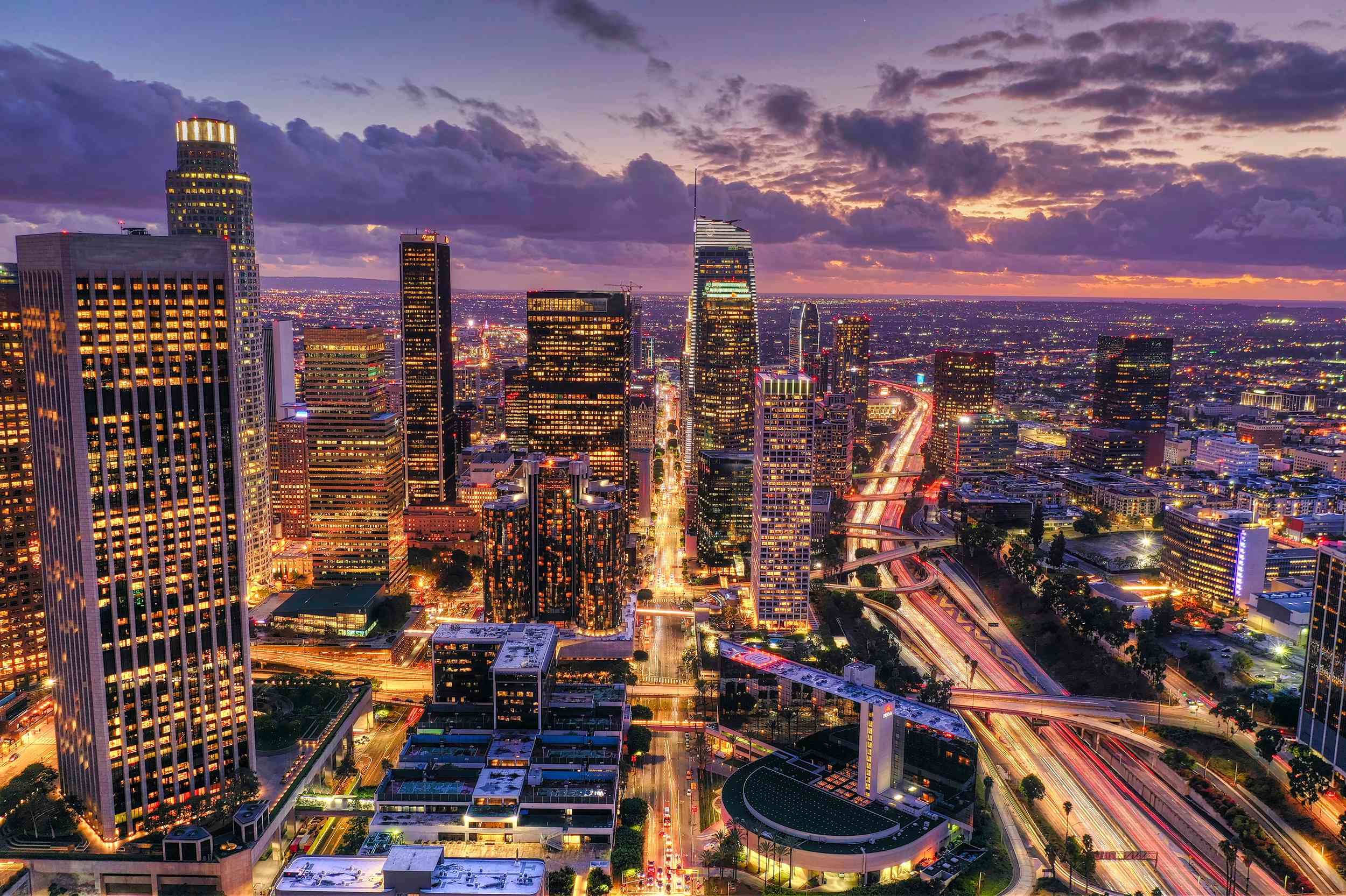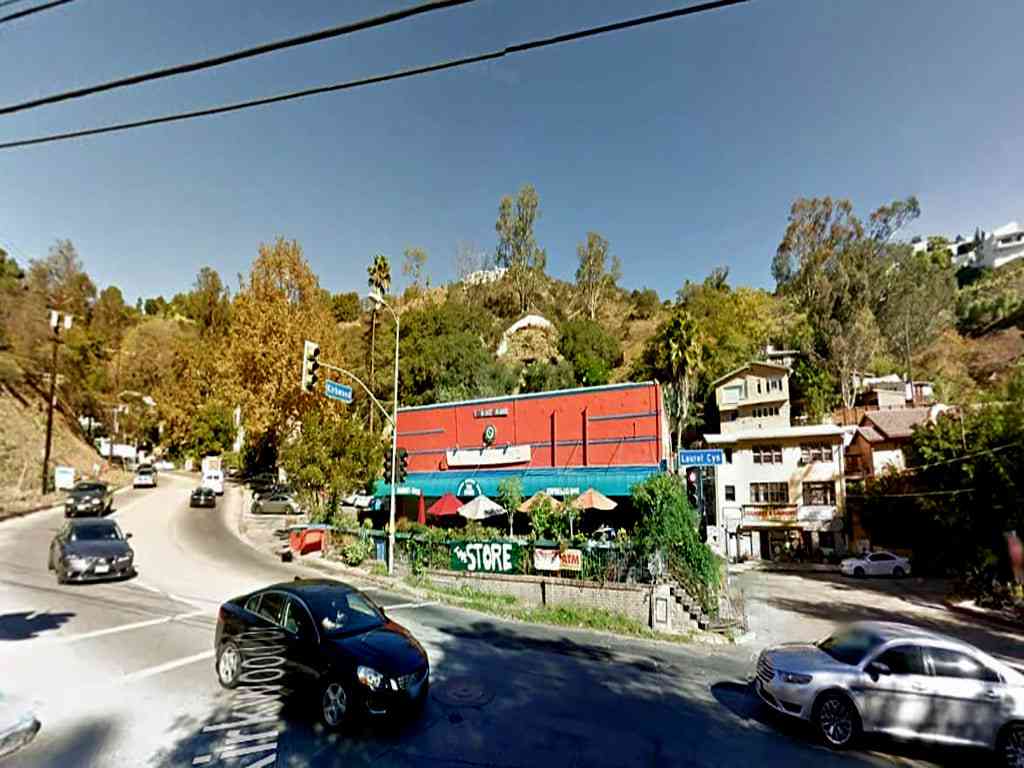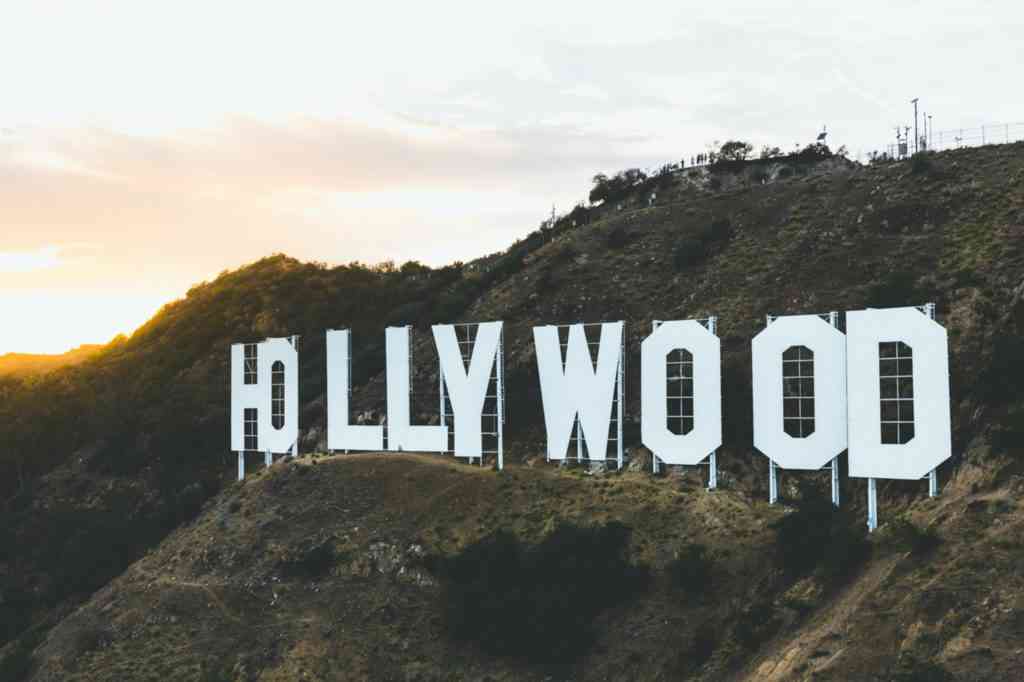Table of Contents
Can You Drink Tap Water in Los Angeles?
Yes, Los Angeles's tap water is generally considered safe to drink as Los Angeles has no active health based violations of the Safe Drinking Water Act (SDWA) that we are aware of. Other factors such as lead piping in a home, or low levels of pollutants on immunocompromised individuals, should also be considered, however. To find more recent info we might have, you can check out our boil water notice page, the city's water provider website, or Los Angeles's local Twitter account.
According the EPA’s ECHO database, from April 30, 2019 to June 30, 2022, Los Angeles's water utility, Los Angeles-City, Dept. of Water & Power, had 0 violations of the Safe Drinking Water Act. For more details on the violations, please see our violation history section below. The last violation for Los Angeles was resolved on Jan. 31, 2018. This assessment is based on the Los Angeles-City, Dept. of Water & Power water system, other water systems in the city may have different results.
While tap water that meets the EPA health guidelines generally won’t make you sick to your stomach, it can still contain regulated and unregulated contaminants present in trace amounts that could potentially cause health issues over the long-run. These trace contaminants may also impact immunocompromised and vulnerable individuals.
The EPA is reviewing if it’s current regulations around pollutant levels in tap water are strict enough, and the health dangers posed by unregulated pollutants, like PFAS.
Water Quality Report for Los Angeles Tap Water
The most recent publicly available numbers for measured contaminant levels in Los Angeles tap water are in its 2020 Water Quality Report. As you can see, there are levels which the EPA considers to be acceptable, but being below the maximum allowable level doesn’t necessarily mean the water is healthy.
Lead in tap water, for example, is currently allowed at up to 15ppb by the EPA, but it has set the ideal goal for lead at zero. This highlights how meeting EPA standards doesn’t necessarily mean local tap water is healthy.
EPA regulations continue to change as it evaluates the long term impacts of chemicals and updates drinking water acceptable levels. The rules around arsenic, as well as, lead and copper are currently being re-evaluated.
There are also a number of "emerging" contaminants that are not currently. For example, PFAS (Per- and polyfluoroalkyl substances), for which the EPA has issued a health advisory. PFAS are called "forever chemicals" since they tend not to break down in the environment or the human body and can accumulate over time.
We recommend looking at the contaminants present in Los Angeles's water quality reports, or getting your home's tap water tested to see if you should be filtering your water.
Los Angeles Tap Water Safe Drinking Water Act Violation History - Prior 10 Years
Below is a ten year history of violations for the water system named Los Angeles-City, Dept. of Water & Power for Los Angeles in California. For more details please see the "What do these Violations Mean?" section below.
From Jan. 1, 2018 to Jan. 31, 2018, Los Angeles had 1 health-based Safe Drinking Water Act violation with the violation category being Treatment Technique Violation, more specifically, the violation code was Treatment Technique (SWTR and GWR) which falls into the Microbials rule code group, and the Surface Water Treatment Rules rule code family for the following contaminant code: Long Term 2 Enhanced Surface Water Treatment Rule.
From March 1, 2016 to March 31, 2016, Los Angeles had 1 non-health based Safe Drinking Water Act violation with the violation category being Monitoring and Reporting, more specifically, the violation code was Monitoring, Turbidity (Enhanced SWTR) which falls into the Microbials rule code group, and the Surface Water Treatment Rules rule code family for the following contaminant code: Interim Enhanced Surface Water Treatment Rule.
For the compliance period beginning Jan. 20, 2016, Los Angeles had 1 non-health based Safe Drinking Water Act violation with the violation category being Other Violation, more specifically, the violation code was Notification, State which falls into the Microbials rule code group, and the Groundwater Rule rule code family for the following contaminant code: Groundwater Rule.
From Jan. 1, 2016 to Jan. 31, 2016, Los Angeles had 1 health-based Safe Drinking Water Act violation with the violation category being Treatment Technique Violation, more specifically, the violation code was Treatment Technique (SWTR and GWR) which falls into the Microbials rule code group, and the Groundwater Rule rule code family for the following contaminant code: Groundwater Rule.
From June 1, 2014 to June 30, 2014, Los Angeles had 1 health-based Safe Drinking Water Act violation with the violation category being Maximum Contaminant Level Violation, more specifically, the violation code was Maximum Contaminant Level Violation, Acute (TCR) which falls into the Microbials rule code group, and the Total Coliform Rules rule code family for the following contaminant code: Coliform (TCR).
Is there Lead in Los Angeles Water?
Based on the EPA’s ECHO Database, 90% of the samples taken from the Los Angeles water system, Los Angeles-City, Dept. of Water & Power, between sample start date and sample end date, were at or below, 0.005 mg/L of lead in Los Angeles water. This is 33.3% of the 0.015 mg/L action level. This means 10% of the samples taken from Los Angeles contained more lead.
While Los Angeles water testing may have found 0.005 mg/L of lead in its water, that does not mean your water source has the same amount. The amount of lead in water in a city can vary greatly from neighborhood to neighborhood, or even building to building. Many buildings, particularly older ones, have lead pipes or service lines which can be a source of contamination. To find out if your home has lead, we recommend getting you water tested.
No amount of lead in water is healthy, only less dangerous. As lead accumulates in our bodies over time, even exposure to relatively small amounts can have negative health effects. For more information, please check out our Lead FAQ page.
Are there PFAS in Los Angeles Tap Water?
Currently, testing tap water for PFAS isn’t mandated on a national level. We do have a list of military bases where there have been suspected or confirmed leaks. There appears to be at least one military base - DFSP Norwalk - near Los Angeles with suspected leaks.
With many potential sources of PFAS in tap water across the US, the best information we currently have about which cities have PFAS in their water is this ewg map, which you can check to see if Los Angeles has been evaluated for yet.
Our stance is better safe than sorry, and that it makes sense to try to purify the tap water just in case.
Los Angeles SDWA Violation History Table - Prior 10 Years
| Compliance Period | Status | Health-Based? | Category Code | Code | Rule Code | Contaminant Code | Rule Group Code | Rule Family Code |
|---|---|---|---|---|---|---|---|---|
| 01/01/2018 - 01/31/2018 | Resolved | Yes | Treatment Technique Violation (TT) | Treatment Technique (SWTR and GWR) (41) | Long Term 2 Enhanced Surface Water Treatment Rule (123) | Long Term 2 Enhanced Surface Water Treatment Rule (0800) | Microbials (100) | Surface Water Treatment Rules (120) |
| 03/01/2016 - 03/31/2016 | Resolved | No | Monitoring and Reporting (MR) | Monitoring, Turbidity (Enhanced SWTR) (38) | Long Term 1 Enhanced Surface Water Treatment Rule (122) | Interim Enhanced Surface Water Treatment Rule (0300) | Microbials (100) | Surface Water Treatment Rules (120) |
| 01/20/2016 - | Resolved | No | Other Violation (Other) | Notification, State (05) | Ground Water Rule (140) | Groundwater Rule (0700) | Microbials (100) | Groundwater Rule (140) |
| 01/01/2016 - 01/31/2016 | Resolved | Yes | Treatment Technique Violation (TT) | Treatment Technique (SWTR and GWR) (41) | Ground Water Rule (140) | Groundwater Rule (0700) | Microbials (100) | Groundwater Rule (140) |
| 06/01/2014 - 06/30/2014 | Resolved | Yes | Maximum Contaminant Level Violation (MCL) | Maximum Contaminant Level Violation, Acute (TCR) (21) | Total Coliform Rule (110) | Coliform (TCR) (3100) | Microbials (100) | Total Coliform Rules (110) |
What do these Violations Mean?
Safe Drinking Water Act Violations categories split into two groups, health based, and non-health based. Generally, health based violations are more serious, though non-health based violations can also be cause for concern.
Health Based Violations
- Maximum contaminant levels (MCLs) - maximum allowed contaminant level was exceeded.
- Maximum residual disinfectant levels (MRDLs) - maximum allowed disinfectant level was exceeded.
- Other violations (Other) - the exact required process to reduce the amounts of contaminants in drinking water was not followed.
Non-Health Based Violations
- Monitoring and reporting violations (MR, MON) - failure to conduct the required regular monitoring of drinking water quality, and/or to submit monitoring results on time.
- Public notice violations (Other) - failure to immediately alert consumers if there is a serious problem with their drinking water that may pose a risk to public health.
- Other violations (Other) - miscellaneous violations, such as failure to issue annual consumer confidence reports or maintain required records.
SDWA Table Key
| Field | Description |
|---|---|
| Compliance Period | Dates of the compliance period. |
| Status |
Current status of the violation.
|
| Health-Based? | Whether the violation is health based. |
| Category Code |
The category of violation that is reported.
|
| Code | A full description of violation codes can be accessed in the SDWA_REF_CODE_VALUES (CSV) table. |
| Contaminant Code | A code value that represents a contaminant for which a public water system has incurred a violation of a primary drinking water regulation. |
| Rule Code |
Code for a National Drinking Water rule.
|
| Rule Group Code |
Code that uniquely identifies a rule group.
|
| Rule Family Code |
Code for rule family.
|
For more clarification please visit the EPA's data dictionary.
What do people in Los Angeles think about the tap water?
Tap water is safe to drink in LA. In 2017 the Los Angeles Department of Water and Power reported that the nearly 160 billion gallons of drinking water provided to the city met or exceeded all drinking water standards for health, cleanliness and safety.
Los Angeles Water - Frequently Asked Questions
| By Phone: | 800-342-5397 |
| By Email: | razmik.manoukian@ladwp.com |
| By Mail: | 111 NORTH HOPE ST ROOM 1214 LOS ANGELES, CA, 90012 |
Existing customers can login to their Los Angeles-City, Dept. of Water & Power account to pay their Los Angeles water bill by clicking here.
If you want to pay your Los Angeles-City, Dept. of Water & Power bill online and haven't made an account yet, you can create an account online. Please click here to create your account to pay your Los Angeles water bill.
If you don't want to make an account, or can't remember your account, you can make a one-time payment towards your Los Angeles water bill without creating an account using a one time payment portal with your account number and credit or debit card. Click here to make a one time payment.
Moving to a new house or apartment in Los Angeles means you will often need to put the water in your name with Los Angeles-City, Dept. of Water & Power. In order to put the water in your name, please click the link to the start service form below. Start service requests for water bills typically take two business days.
Leaving your house or apartment in Los Angeles means you will likely need to take your name off of the water bill with Los Angeles-City, Dept. of Water & Power. In order to take your name off the water bill, please click the link to the stop service form below. Stop service for water bills requests typically take two business days.

The estimated price of bottled water
$1.91 in USD (1.5-liter)
USER SUBMITTED RATINGS
- Drinking Water Pollution and Inaccessibility
- Water Pollution
- Drinking Water Quality and Accessibility
- Water Quality
The above data is comprised of subjective, user submitted opinions about the water quality and pollution in Los Angeles, measured on a scale from 0% (lowest) to 100% (highest).
Related FAQS
Contaminants
Los Angeles Department of Water and Power
EWG's drinking water quality report shows results of tests conducted by the water utility and provided to the Environmental Working Group by the California State Water Resources Control Board, as well as information from the U.S. EPA Enforcement and Compliance History database (ECHO). For the latest quarter assessed by the U.S. EPA (January 2019 - March 2019), tap water provided by this water utility was in compliance with federal health-based drinking water standards.
Utility details
- Serves: 3935257
- Data available: 2012-2017
- Data Source: Surface water
- Total: 21
Contaminants That Exceed Guidelines
- Arsenic
- Bromate
- Chromium (hexavalent)
- Nitrate
- Nitrate and nitrite
- Total trihalomethanes (TTHMs)
- Uranium
Other Detected Contaminants
- 1%2C2-Dichloroethane
- 1%2C4-Dioxane
- Bromide
- Chlorate
- Chlorodifluoromethane
- Fluoride
- Haloacetic acids (HAA5)
- Molybdenum
- Selenium
- Strontium
- Tetrachloroethylene (perchloroethylene)
- Trichloroethylene
- Trichlorofluoromethane
- Vanadium
Reminder
Always take extra precautions, the water may be safe to drink when it leaves the sewage treatment plant but it may pick up pollutants during its way to your tap. We advise that you ask locals or hotel staff about the water quality. Also, note that different cities have different water mineral contents.
Sources and Resources
Sources Cited
Additional Resources
Current Weather in Los Angeles
LOS ANGELES WEATHERSome of the Convenience Stores in LA

- 7-Eleven
- Meir Mart
- Gas station G&M
- Snack Time
- Mini Mart Grocery Store
- The Corner Store
- Circle K
- Bob's Market
- Vicente Foods
- ampm
- Village Minimart
- Power Discount Store
- Gateway Newstand
- Family Mart
Estimated Price of Bottled Water
| Volume | USD | EUR | GBP |
| 1.5-liter | $2.02 | €1.86 | £1.65 |
The Los Angeles, CA USA tap water is safe to drink. The Los Angeles Department of Water and Power announces the city’s tap water is so clean and it’s bottled-water quality. According to their newest report, approximately 160 billion gallons of drinking water provided, reached or surpassed all drinking water standards for cleanliness, health, and safety.

Source of Water in Los Angeles, California USA
The Los Angeles, tap water comes from three primary sources: the Owens River, Northern California and Colorado River, and groundwater.
The Owen Rivers, Mono Lake Basin, and reservoirs in the Sierra Nevada Mountains produce 430 million gallons of water to the city of Los Angeles daily through the Los Angeles Aqueduct. They provide one-third of the Los Angeles water supply.
The Colorado River Waterworks can produce 1 billion gallons of water per day to cities in Southern California. Approximately half of Los Angeles water flows from the Colorado River via the Colorado River Aqueduct. The state’s largest source of water comes from Sierras. Rainfall and melted snow flow to aqueduct and groundwater.
Groundwater serves close to one-tenth of the water supply in the city of Los Angeles. Seventy-percent of the city’s water supply once passed through the Los Angeles Aqueduct. Now over 50% passes by the Colorado River Aqueduct.
Every year residence should get a yearly water quality report in the mail from their water supplier, showing you where their water originates from and what’s in it. Additionally, the EPA has the power to monitor all public water systems and set enforceable health standards concerning the contaminants in drinking water.
Although the agency doesn’t ensure your water is clear of all contaminants, it guarantees that the pollutants don’t pose any severe health risk. If there is a violation of standards, that can cause instant illness. Your supplier is obliged to notify you and offer alternative proposals for safe drinking water.